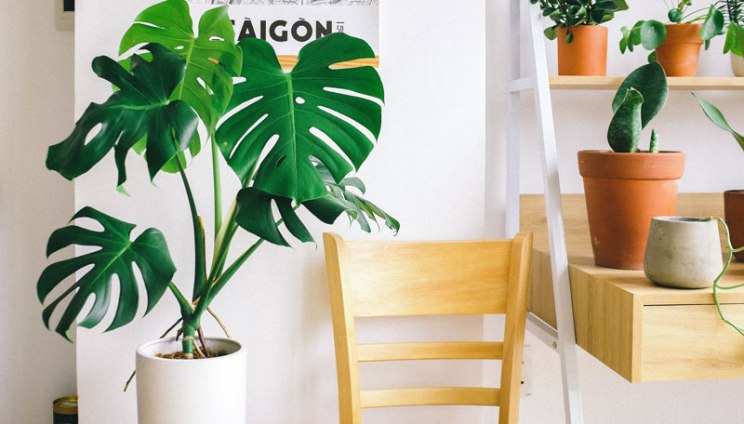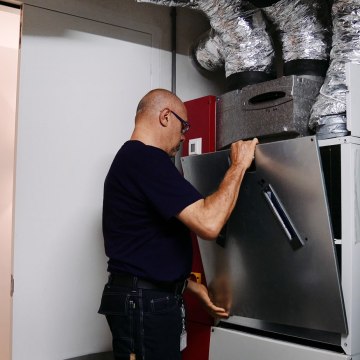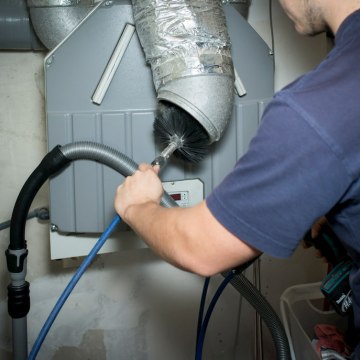

Optimal humidity in the home is very important. Too dry air can lead to complaints such as dry skin, dry throat and coughing, which nobody wants! During the winter, humidity levels are often low. This is mainly due to central heating. Heating the air reduces the amount of humidity in the house.
But how do you make sure the humidity is maintained? Here are six tips on how to increase the humidity in your home.


It may come as no surprise, but good ventilation is the basis for optimum humidity and the most important tip against dry air. It is therefore important to ensure that there is an adequate supply of fresh air from outside.
If this is not automatically regulated, you will have to do it yourself. Although you may prefer not to, it is wise to air your home regularly, even during the winter months. It is best to open a window on wet winter days when the air outside is not so dry. Read our other blog for more tips on winter airing.
Please note: opening a window is not the same as airing, but it can help to restore the desired level of humidity for a while.
A useful tool for measuring humidity in the home is a hygrometer. A hygrometer measures relative humidity and shows whether the humidity level in the home is within the recommended range of 40-60%. Low humidity levels can cause problems such as dry eyes and skin, and even cracking of wooden furniture and floors.
Ensuring a constant temperature of at least 18 to 20 degrees Celcius is also important. If the temperature is too cold, condensation can form, leading to excessive humidity levels.
Another good idea can be to invest in a humidifier. A humidifier is a device that keeps the humidity in the house between the desired 40 and 60 percent. Especially in the winter months, it is nice to have a humidifier to help maintain humidity levels.
Humidifiers come in a variety of shapes and sizes. So you can always find one to suit the size of the room you want to humidify.
There are different types of humidifier, such as:
The next tip is to use air purifying plants. There are several plants whose air-purifying properties can help improve humidity levels in the home. Harmful substances in the air are absorbed by the plants through the leaves and then stored and broken down in the (root) plant.
Air purifying plants convert CO2 into oxygen and produce water vapour, improving the humidity levels in the home. Plants are not only good for decoration, they also contribute to a healthy indoor climate. So hurry down to the gardening centre!
Another simple way to improve humidity in the house is to place a bucket or vase of water on the windowsill above the radiator, for example. The heat in the house will cause the water to evaporate, increasing humidity. Prefer not to have a bucket in the house? There are also special containers filled with water that you can hang on your radiator.
When you take a shower, a lot of humid air is released. Normally, you remove this air by opening a window or turning up the ventilation. However, if you are experiencing dry air, you can also choose to let the humid air spread around the bathroom.
If you open the shower doors immediately after taking a shower, there is still a lot of water vapour, which can increase the humidity. This trick also works with the dishwasher, if you open it as soon as you finish washing. As an added bonus, your dishes will often dry faster!
The biggest culprit of low humidity in the house is central heating. Not at home or going out for a few hours? Then turn off your heating. It is also best to turn off the heating at night. This way, you will not wake up to dry and uncomfortable indoor air, and you will also save on your energy costs. So, it's a win-win situation!
Good ventilation is essential to maintain a healthy indoor environment. Humidity levels can rise quickly during activities such as cooking, showering and housework. It is therefore important to provide extra ventilation in these situations.
When you cook, moisture and dirt are released into the air. By providing extra ventilation, you can prevent the damp air from building up and causing problems such as mould. Doing chores around the house can also release a lot of dust and dirt into the air. Open a window or turn the mechanical ventilation to the highest setting when doing chores or while cooking.
Do you have a mechanical ventilation system in your home? If so, it is important that you never turn it off, unless you are instructed to close windows and doors (e.g. in the event of a disaster in the area) or during maintenance work on the system. Turning off your mechanical ventilation system can lead to poor indoor air quality and humidity problems.
These simple tips will help you maintain ideal humidity levels in your home. Remember to ventilate, even in the winter months.
Are you still experiencing humidity problems in your home, or would you like to know what a ventilation system could do for you? We are here to help. Contact us for tailored advice.





